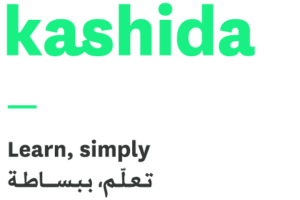Scalable eLearning Solutions For Modern Learners
In today’s fast-paced business environment, organizations need to deliver high-quality, relevant training materials quickly and efficiently. Modular content architecture has emerged as a powerful solution, offering the building blocks for rapid eLearning development. However, developing a modular content library comes with its own set of challenges. In this article, we’ll explore common obstacles and provide practical strategies to help L&D professionals, training managers, and content developers overcome these hurdles, ensuring success in creating scalable, flexible, and effective eLearning solutions.
Understanding The Challenges Of Modular Content Management
1. Content Consistency
One of the most significant challenges organizations face is ensuring consistency across all content modules. Without a standardized approach, inconsistencies can creep in, leading to a disjointed learning experience. To combat this, it’s essential to establish clear guidelines and templates that define the tone, style, and format of each piece of content.
2. Reusability And Scalability
Creating content that can be easily reused and scaled across different programs and departments is another common challenge. The key lies in designing content that is modular from the start, breaking down complex information into smaller, standalone modules that can be repurposed across various training scenarios. This allows leads across multifunctional teams to share and exchange knowledge that can benefit several people across organizations.
3. Maintenance And Updates
Keeping content up to date is crucial, especially in industries where information changes rapidly. Modular content architecture simplifies this process by allowing organizations to update individual modules without the need to overhaul entire courses. However, maintaining an organized system where updates can be tracked and implemented efficiently is essential.
The Importance Of Defining Content Modules
Well-structured content is the backbone of a successful modular content library. By clearly defining content modules and categorizing them appropriately, organizations can ensure that their content is easily accessible, manageable, and scalable. This also facilitates collaboration among content developers and helps maintain consistency across the board.
Leveraging Authoring Tools And Technologies
Choosing the right authoring tools and technologies plays a pivotal role in the success of modular content creation. These tools should not only support the creation of modular content but also allow for seamless integration with existing Learning Management Systems (LMS). Look for platforms that offer features like version control, collaborative editing, and easy content repurposing.
Implementing A Robust Content Governance Framework
Content governance is essential for maintaining the integrity and quality of a modular content library. A robust governance framework should include policies and procedures for content creation, review, approval, and updates. It should also outline the roles and responsibilities of team members to ensure accountability and adherence to standards.
Measuring Success: Key Metrics For Evaluation
To determine the effectiveness of a modular content library, it’s important to track specific metrics. These may include:
- Time to create and deploy content – Measure how quickly content can be developed and made available to learners.
- Content reusability rate – Track the percentage of content that is reused across different programs or departments.
- Learner engagement and satisfaction – Assess how well the content resonates with learners and meets their needs.
- Content update efficiency – Evaluate the speed and accuracy of implementing updates to existing content.
Drawing Inspiration From Industry Leaders
We can learn from industries that excel in content management and reuse. For example:
- Technology companies like Microsoft and Adobe employ modular content strategies to keep their extensive knowledge bases and documentation up to date.
- eLearning platforms like LinkedIn Learning and Udemy rely on modular content to manage and update their vast libraries efficiently.
- Large-scale enterprises and multinational corporations, such as banks and healthcare providers, benefit from modular content strategies to maintain consistency and relevance across their numerous departments and locations.
The Unique Advantage Of Modular Content Architecture
Modular content architecture is not just about organization; it’s about accelerating the development process. This enables organizations to respond quickly to business changes and deliver timely learning experiences. As organizations grow and employee roles evolve, modular content can easily accommodate new audiences and learning objectives, ensuring that training remains relevant and effective.
If you want to transform your organization’s eLearning strategy with modular content and save yourself the abovementioned hassles, get in touch with Kashida to learn how we can help you design a scalable, flexible, and high-quality modular content library that meets your unique needs.

Kashida
We are about learning, simply.We design and create custom learning content and deliver it across multiple platforms, always enriching learning with technology.Gold winners at Learning Technologies Awards UK 2018 for Best Learning Technologies Project

